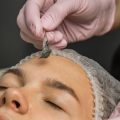Introduction to Microneedling and Dermarolling
Microneedling and dermarolling are minimally invasive cosmetic procedures that have witnessed a marked rise in popularity across the United Kingdom. These treatments involve the use of fine needles to create controlled micro-injuries on the skin’s surface, stimulating the body’s natural healing processes and promoting collagen production. Originally developed for medical purposes, microneedling and dermarolling have become common features in aesthetic clinics and beauty salons throughout Britain, offering solutions for concerns such as acne scarring, fine lines, pigmentation, and overall skin rejuvenation. Their appeal lies in their ability to deliver noticeable results with relatively low downtime compared to more invasive procedures. As these treatments gain traction among individuals seeking non-surgical enhancements, understanding the frameworks governing their safety and professional administration is increasingly essential for both practitioners and clients.
2. Current UK Legislation and Regulatory Bodies
Microneedling and dermarolling are classified as non-surgical cosmetic procedures in Britain, but they are nonetheless subject to a robust legal framework designed to ensure client safety and practitioner accountability. The principal authority overseeing these practices is the Care Quality Commission (CQC), which regulates providers of health and social care in England. While not all aesthetic clinics require CQC registration, those offering treatments that penetrate the skin beyond the epidermis or involve prescription-only medicines must comply with CQC regulations. Additionally, local councils may impose licensing requirements for premises where microneedling and dermarolling are performed.
The following table summarises key regulatory bodies and their roles:
| Authority | Role & Responsibilities |
|---|---|
| Care Quality Commission (CQC) | Regulates clinics providing medical-grade microneedling; ensures compliance with infection control, staff qualifications, and patient safety standards. |
| Local Authorities | Issue special treatment licences; inspect premises for hygiene, waste disposal, and adherence to local bylaws. |
| Health and Safety Executive (HSE) | Oversees workplace health and safety, including the handling and disposal of sharps used during procedures. |
| General Medical Council (GMC)/Nursing and Midwifery Council (NMC) | Regulate registered healthcare professionals who may perform advanced microneedling procedures. |
Further guidance is provided by national standards such as those from the British Standards Institution (BSI) and professional bodies like the Joint Council for Cosmetic Practitioners (JCCP). These set out best practice protocols, informed consent requirements, infection prevention measures, and aftercare advice. It is essential for practitioners to remain updated on evolving legislation, as the UK government continues to strengthen regulation within the aesthetics sector to protect public health.
![]()
3. Practitioner Training and Certification Requirements
Ensuring patient safety and treatment efficacy in microneedling and dermarolling procedures is fundamentally linked to the qualifications and training of practitioners in Britain. In accordance with UK regulations, those who wish to perform these procedures must adhere to a strict set of training and certification standards designed to protect public health and maintain high professional standards.
Mandatory Qualifications
Practitioners are required to have a background in healthcare or aesthetics, such as being a registered nurse, doctor, or qualified aesthetician. Recent updates from professional bodies, including the Joint Council for Cosmetic Practitioners (JCCP) and the British Association of Beauty Therapy & Cosmetology (BABTAC), emphasise that only individuals with appropriate medical or aesthetic qualifications should undertake advanced skin treatments like microneedling. This approach minimises risks associated with poor technique or lack of anatomical knowledge.
Accredited Training Courses
Completion of accredited training courses is mandatory before performing microneedling or dermarolling on clients. These courses must be recognised by reputable organisations such as the JCCP or BABTAC. Training covers a comprehensive range of topics, including skin anatomy, device handling, infection control protocols, client assessment, contraindications, and emergency response procedures. Practical hands-on experience under supervision forms an integral part of these programmes.
Certification Standards
Upon successful completion of training, practitioners receive certification demonstrating their competence in microneedling and dermarolling procedures. This certification is essential not only for legal compliance but also for securing adequate professional indemnity insurance—a requirement for practising legally in Britain. Regular continuing professional development (CPD) is strongly encouraged to ensure practitioners remain up-to-date with evolving techniques, safety standards, and regulatory changes within the industry.
Regulatory Oversight
The Care Quality Commission (CQC) plays a significant role in overseeing clinics that offer more invasive forms of microneedling (such as those using devices with needles over 1.5mm). For less invasive treatments, local councils may also impose licensing requirements and carry out inspections to ensure practitioners meet hygiene and safety standards. Adherence to these regulatory frameworks ensures that clients receive treatments from competent professionals operating within the boundaries of UK law.
4. Clinical Safety and Hygiene Protocols
In Britain, strict clinical safety and hygiene protocols are fundamental to microneedling and dermarolling practices. These standards are designed to minimise the risk of complications and infections, safeguarding patient wellbeing in compliance with UK regulations.
Essential Safety Precautions
Clinics must adhere to robust safety precautions at every stage of the procedure. Practitioners are expected to conduct comprehensive pre-treatment assessments, including reviewing medical histories and identifying contraindications such as active skin infections or certain chronic conditions. Patient consent and clear communication regarding risks, benefits, and aftercare are compulsory under British law.
Sterilisation Methods
To prevent cross-contamination, all equipment used in microneedling and dermarolling must be thoroughly sterilised. Single-use devices are preferred; however, if reusable instruments are employed, they should undergo high-level disinfection processes such as autoclaving or chemical sterilisation. The table below outlines commonly accepted sterilisation methods in UK clinics:
| Method | Description | Application |
|---|---|---|
| Autoclaving | Steam sterilisation at high pressure and temperature | Reusable metal dermarollers and surgical tools |
| Chemical Sterilisation | Use of approved disinfectant solutions (e.g., glutaraldehyde) | Tools sensitive to heat or requiring rapid turnaround |
| Single-Use Devices | Pre-sterilised, disposed of after one session | Most dermarollers and microneedling cartridges in modern clinics |
Hygiene Measures in UK Clinics
The British regulatory framework mandates a highly controlled clinical environment. Practitioners must wear disposable gloves, masks, and aprons during procedures. Treatment rooms should be cleaned between clients using medical-grade disinfectants. Hand hygiene is enforced through frequent washing or use of alcohol-based sanitisers. Additionally, any wounds or bleeding during treatment must be managed according to NHS infection prevention guidelines.
Waste Disposal Practices
Proper disposal of sharps and clinical waste is non-negotiable. Used needles and single-use items are placed in designated sharps containers, while contaminated materials follow strict hazardous waste protocols as stipulated by the Care Quality Commission (CQC).
Continuous Training and Auditing
Ongoing staff training in infection control, regular audits of hygiene practices, and adherence to the latest guidance from Public Health England ensure that standards are consistently upheld across all reputable UK clinics.
5. Patient Consent and Aftercare Guidance
Overview of Informed Consent Processes
In the UK, obtaining informed consent is a legal and ethical requirement prior to any microneedling or dermarolling treatment. Practitioners must ensure that clients fully understand the nature of the procedure, potential risks, anticipated benefits, and possible alternatives. Consent forms should be clear, comprehensive, and tailored to each individual, ensuring transparency regarding expected results and possible side effects. It is standard practice for practitioners to provide written documentation and allow patients adequate time to consider their options before proceeding.
The Importance of Patient Education
Patient education is fundamental in maintaining high safety standards within British aesthetic clinics. Clients should receive detailed explanations about the entire process, including pre-treatment requirements such as avoiding certain skincare products or medications. During consultations, it is best practice for practitioners to address all patient queries, clarify any misconceptions, and set realistic expectations regarding outcomes. By empowering patients with knowledge, clinics foster trust and enhance treatment satisfaction.
Best Practice Recommendations for Aftercare
Immediate Post-Treatment Care
After a microneedling or dermarolling session, it is crucial to provide clear aftercare instructions to minimise complications and optimise results. Patients should be advised to keep the treated area clean, avoid direct sun exposure, refrain from using harsh skincare products, and follow specific product recommendations provided by the practitioner.
Ongoing Support and Monitoring
Effective aftercare extends beyond the immediate recovery period. Reputable UK clinics will schedule follow-up appointments to assess healing progress and address any concerns. Patients are encouraged to report unexpected reactions promptly so that practitioners can intervene if necessary. Adhering to these best practices not only ensures compliance with British regulations but also upholds the highest standards of patient safety and care.
6. Product and Device Standards
In the United Kingdom, safety standards for microneedling and dermarolling devices are governed by strict regulatory frameworks to ensure patient safety and product reliability. All devices intended for professional or at-home use must comply with the UK Medical Devices Regulations 2002 (as amended), which align closely with European Union Medical Device Regulation (MDR) requirements post-Brexit. This means that microneedling pens, dermarollers, and associated equipment must be classified appropriately—typically as Class I or IIa medical devices depending on their intended use—and carry a valid UKCA (UK Conformity Assessed) mark as proof of conformity.
Manufacturers are obliged to demonstrate robust quality control measures throughout the production process, including comprehensive risk assessments and clinical evaluations to substantiate both the safety and efficacy of each device. Furthermore, it is mandatory that all devices undergo batch testing to confirm sterility and precision of needle length, as even minor deviations can pose significant health risks. Importantly, practitioners and clinics sourcing equipment should only purchase from reputable suppliers who provide evidence of certification and compliance documentation.
Alongside device certification, clear labelling in English is required, detailing usage instructions, contraindications, and traceable lot numbers for recall purposes if necessary. The Medicines and Healthcare products Regulatory Agency (MHRA) actively monitors the market to identify non-compliant or counterfeit products, issuing recalls and advisories where appropriate. For consumers and practitioners alike, verifying a device’s regulatory status through official MHRA channels offers an added layer of protection against substandard equipment. Adhering to these product and device standards is vital not only for legal compliance but also for maintaining the trust of clients seeking safe, effective microneedling or dermarolling treatments in Britain.

